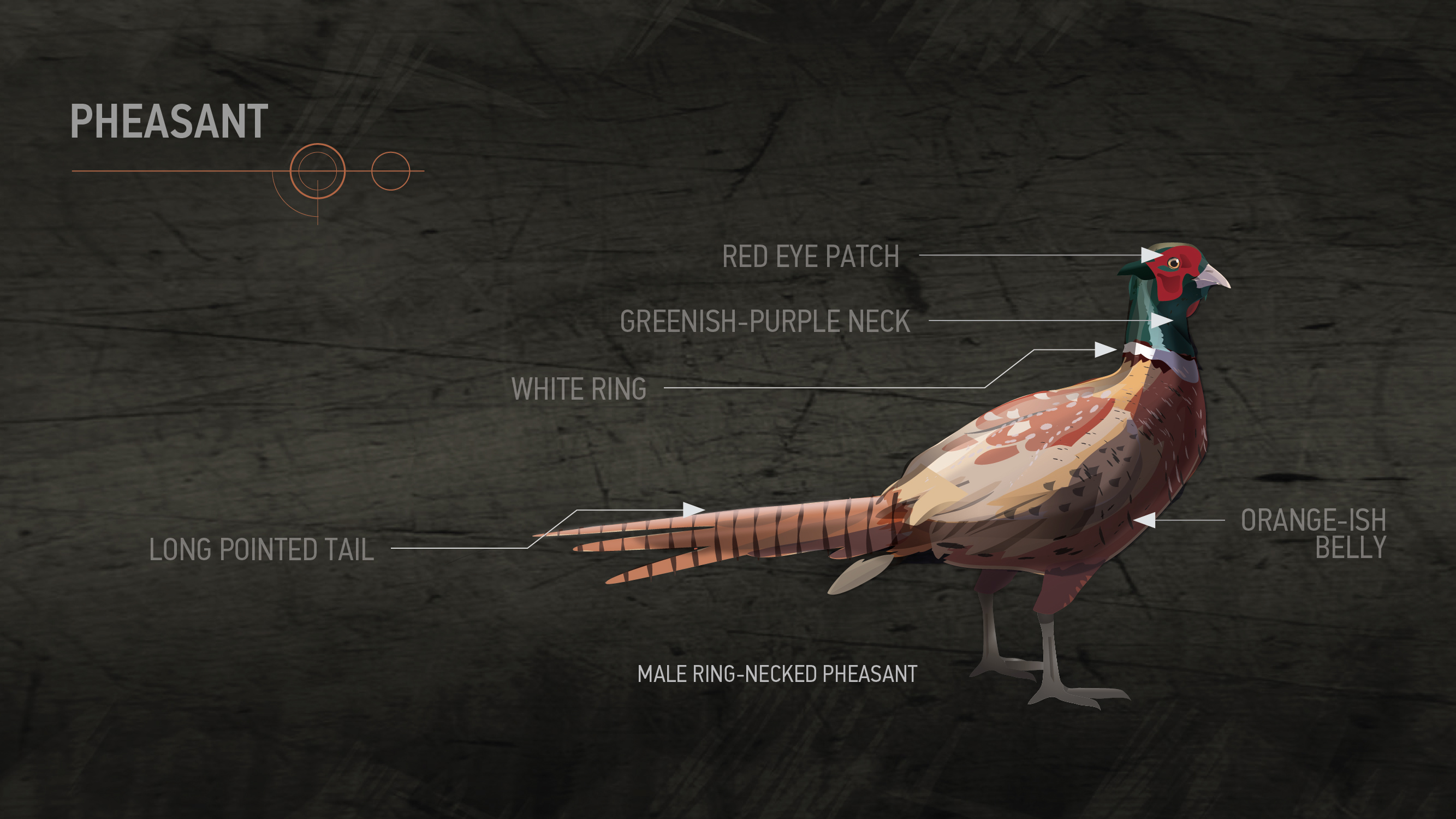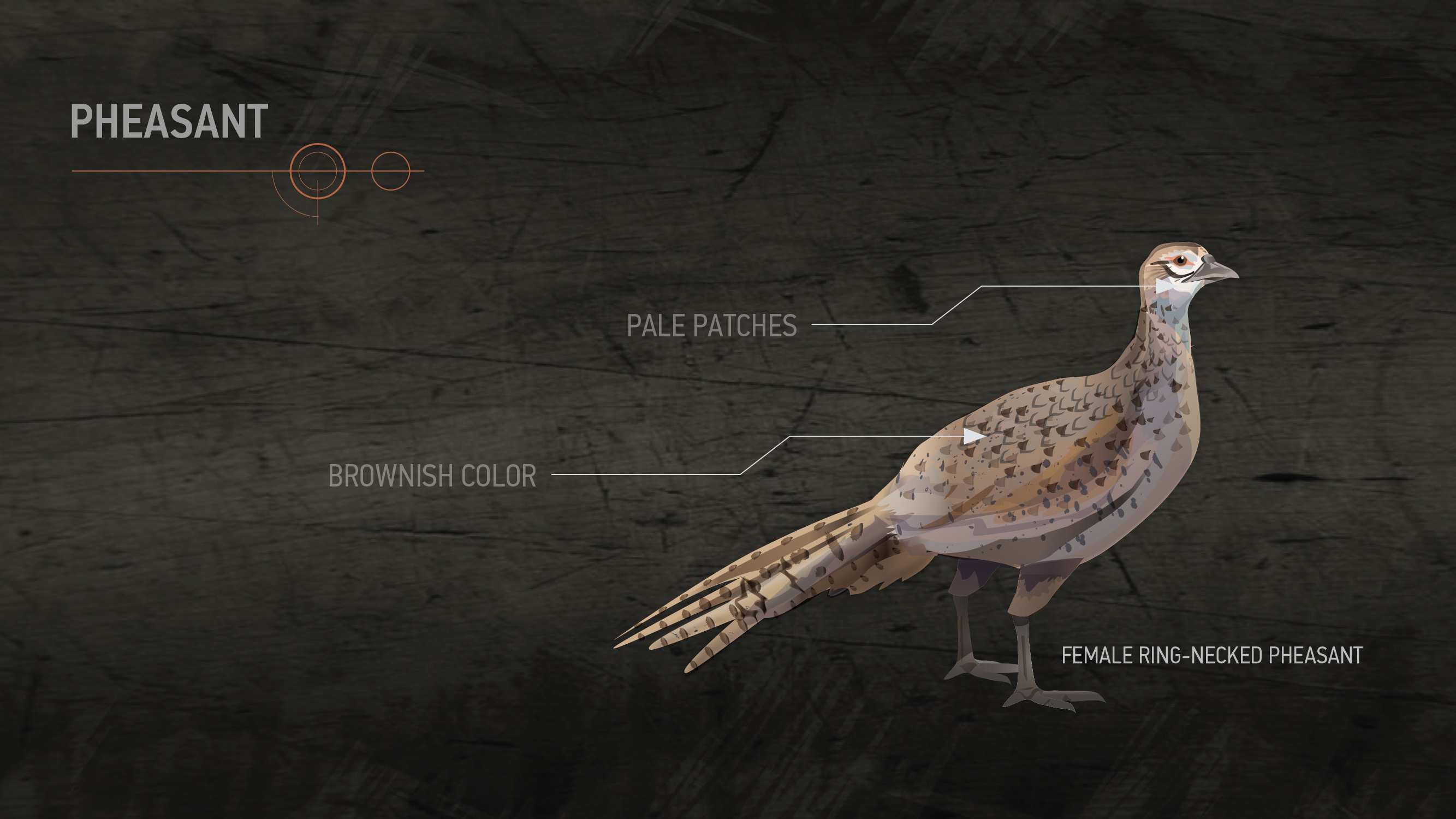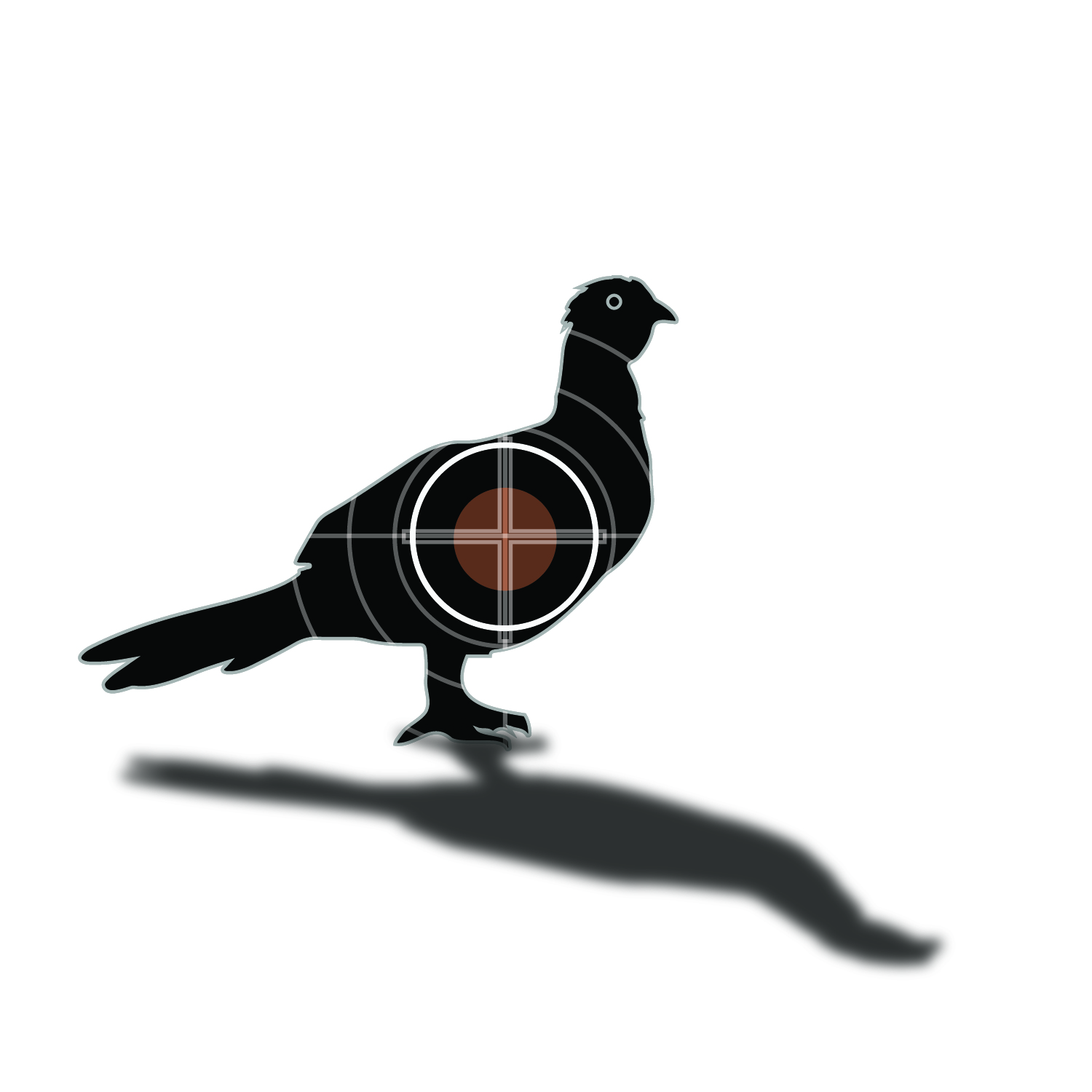HUNTINGsmart! USA Knowledge Base
Module 10 - WILDLIFE
PHEASANT




Pheasant is pleasant for hunting... and eating.
Identification
The ring-necked pheasant (or the common pheasant) looks a like a chicken but with more interesting colors. Male pheasants are brightly-colored with red eye patches, iridescent greenish-purple necks and a white collar around their neck. The females are mostly brownish in color with pale patches on their upper body. The under body of both male and female pheasants is an orange-ish color.
Pheasants are fat birds with tiny heads and pointed spurs on the back of each leg. Both males and females have really long tails that are pointed at the tip.
Diet
In the summer, pheasants will munch on insects and caterpillars but they will also eat fresh vegetation and grain from fields and cow manure. Ring-necked pheasants tend to find their dinner in grasslands, hayfields, the edges of wooded areas and amongst brushy plants. These birds scratch and dig at the ground using their bills and feet in order to get their food.
Habitat
Always on the prowl for the next feast, pheasants can be found in hayfields, grasslands, the edges of tree lines and areas with heavy brush cover. They build their nests on the ground in a well-covered, hollow spots that are surrounded by tall grasses or other vegetation.
Firearms, Ammo & Your Target
Use a shotgun when pheasant hunting. A 12-gauge semi-auto or pump action shotgun will be the best option. The type of ammo you use for pheasant hunting will vary depending on how and when you hunt, as well as the type of shotgun you use.
Generally though, it's best to have a selection of No. 4, 5, and 6 shot. This provides a variety of options as far as the size of bird you can take down and will also give you some options for firing from different ranges.
Vital Zones

You’re aiming for the head, heart and lungs. Shoot accurately and you should hit all three.



